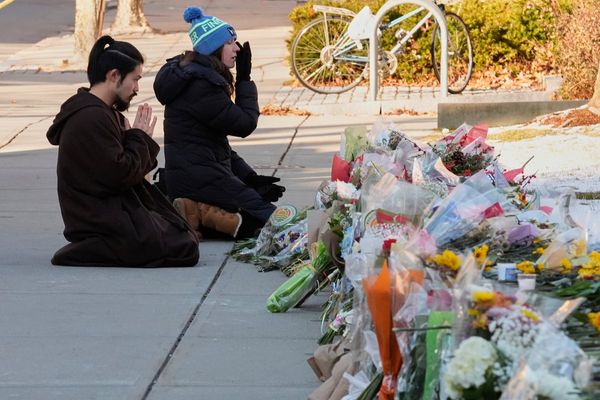
For its 22nd edition, La Gacilly International Photo festival in western France is featuring 10 outdoor exhibitions in honour of big names in British photography including Martin Parr, Terry O’Neill and Don McCullin. Spread across the town’s picturesque parks, nine other exhibitions display environmental themes, with a special focus on the "year of the sea".
"The English don’t do anything like anybody else," La Gacilly Festival’s curator Cyril Drouhet told journalists at a press conference in Paris, as he unveiled the ‘So British’ theme of this year’s jam-packed programme.
"They drive on the left, they have their own currency, they play darts, they believe in ghosts and still have a monarchy. And that’s probably why we love them."
Beyond the quirky humour and eccentricity visible in many of the photographs selected for the festival, there is also a keen observation of contemporary society with all its contradictions.
For Drouhet, the English "know how to cleverly capture a soul: the soul of an era, the soul of a country, the human soul," – a unique vision that sets them apart in the world of photography.

So close, yet so far…
It’s a thousand-year history made up of "misunderstandings" (read: wars) and "hostility" (rivalry), "admiration" (marriages) and "respect" (alliances), says Drouhet, but despite all this, France and the United Kingdom have an unshakeable bond.
British ambassador to Paris Menna Rawlings told journalists that "British photography has always pushed the limits".
"Photographs are more than just technical images," she went on – they are a reflection of global issues, social issues and "have the power to tell stories".
What can impressionist art teach us about climate change?
Among the exhibitions, there is a poignant link to photographic history with a tribute to Anna Atkins (1799 – 1871), a pioneer in the photographic technique of "cyanotypes" used by botanists.
In 1843, she published “ Photographs of British Algae: Cyanotype Impressions considered the first book of its kind and a major reference for scientists and inspiration for contemporary photographers and artists.
The award-winning war-reporter Don McCullin has been invited as one of the big names at the festival. Putting aside his images from war zones, the veteran photographer (born in 1935), has since turned his lens to the landscapes in Somerset, where he now lives, with an exhibition entitled "Life and Death, and what’s left behind".

Transcending frontiers
For Mélina Le Blaye, the festival director photography "invites us to open our horizons, and transform ourselves".
"In this world where images are omnipresent but often ephemeral, we want to take the time to contemplate and to put things into perspective".
From Martin Parr’s beachside snapshots, to Mary Turner’s unassuming portraits of quiet, run-down mining towns, and marginalised communities, it is clear there is no one, single England. The social and environmental terrain is uneven and complex, both beautiful and gritty.
Britain is also synonymous with the kind of pop music that marked generations and continues to produce hits.
Beauty and the blight: a photographer's quest to expose an ecological disaster
The exhibition of Terry O’Neill (1938 – 2019) takes the viewer behind the scenes of the music business with surprising portraits of the Beatles, the Rolling Stones, David Bowie and Elton John, just to name a few.
Festival organisers have also reserved a major part of the festival open to nine exhibitions that take on environmental themes, with a particular accent on the "year of the sea" in France.
The opening of the festival on 1st June comes just a week ahead of a key United Nations Oceans Conference to be held in Nice, 9 – 13 June.
Stunning images of sea life blend with images of coastal locations faced with climate change with photographers like France's Laurent Ballesta and India's Supratim Bhattacharjee respectively.

Extraordinary Africa
The environment selection also covers sublime photo reports from Africa.
French photographer Frédéric Noy takes viewers to Tanzania to discover nature sanctuaries in need of protection, such as the little-known park, Udzungwa, where populations of endemic monkeys are threatened by urbanisation.
His work explores the difficult choices of local people, aware of the need for preservation, but under the pressure to survive – the primary forest being a source of food and firewood.

Noy says it’s "difficult" for locals to accept outsiders, and are "distrustful" of the West's moralist discourse of "saving the planet", especially when these same wealthy countries profit from Africa’s resources for their industries.
By photographing their plight, Noy is asking the public to see both sides of the story, with "humility and patience".
Françoise Huguier is also present with the "Africa and me" collection (also a book), a passionate "guided tour" of her years spent on the African continent including in Burkina Faso, South Africa, Benin and Ethiopia.
She got particularly attached to Mali, where she founded the "Photographic encounters of Bamako" event in 1994. This helped discover talented artists such as Seydou Keïta and Malik Sidibé, now known across the world.
La Gacilly International Photo Festival is outdoors and free for the public from 1 June to 5 October, 2025.







